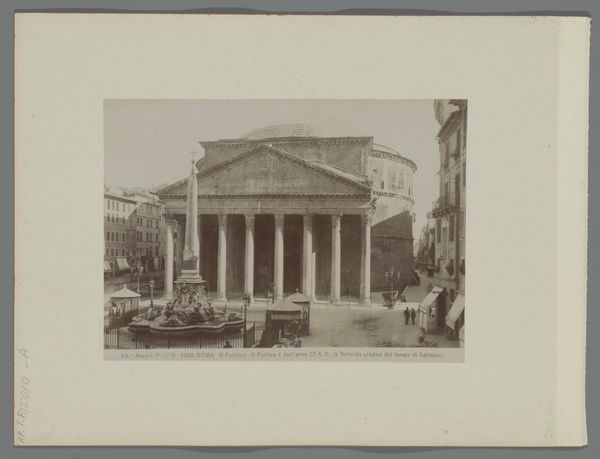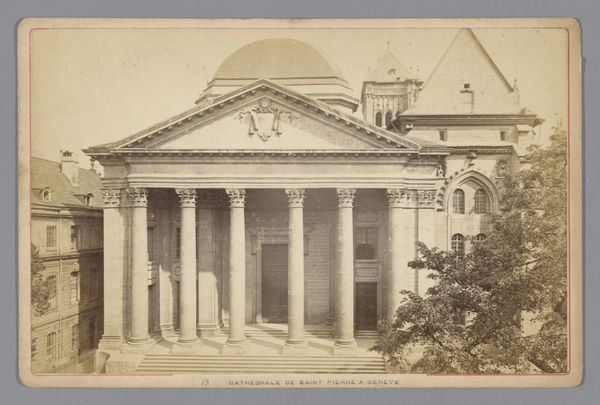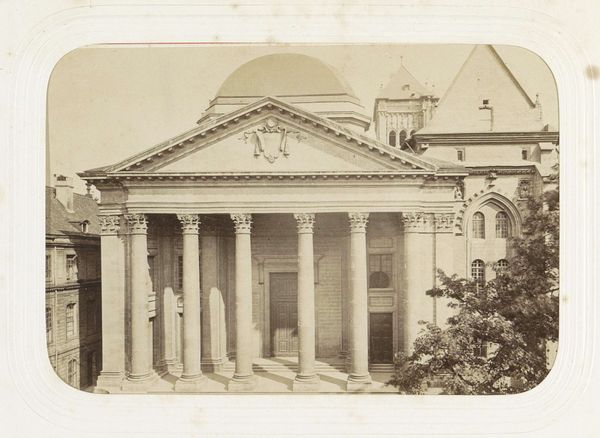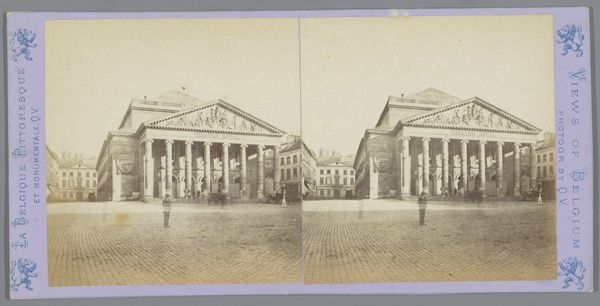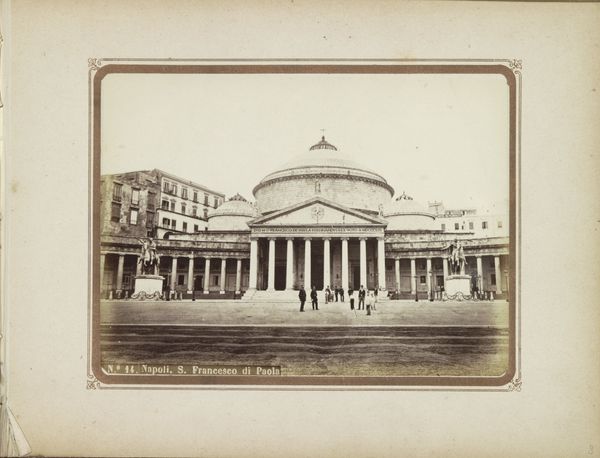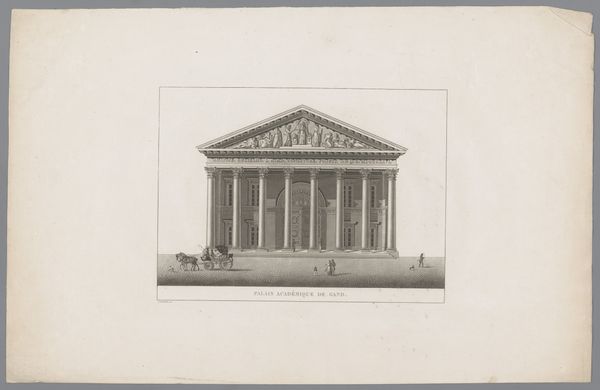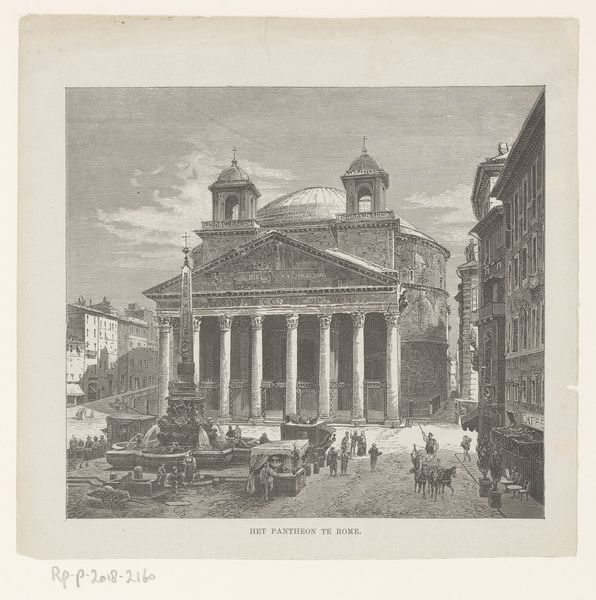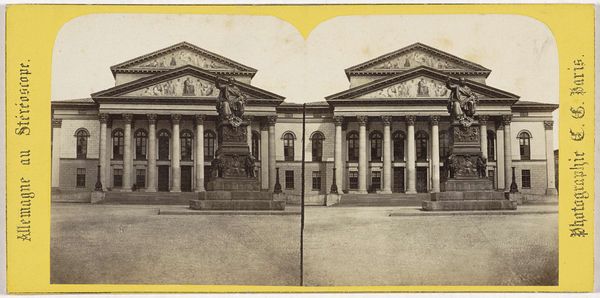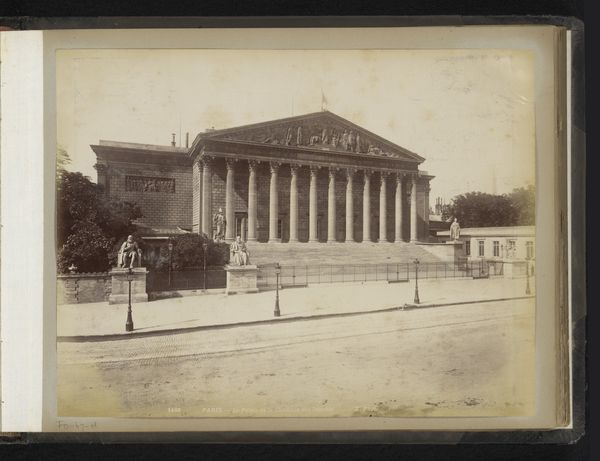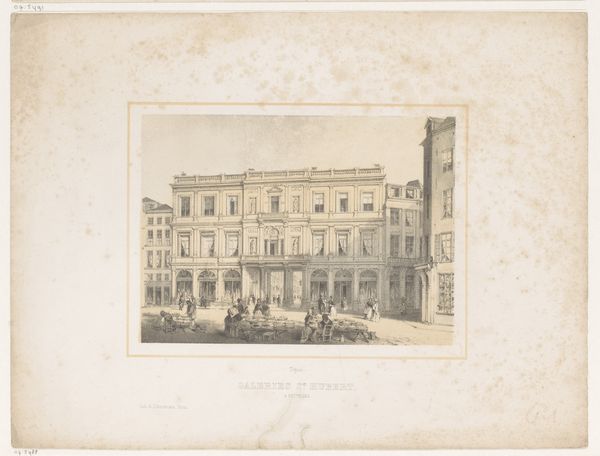
Gezicht op het Pantheonen de Macuteo obelisk te Rome, Italië 1857 - 1914
0:00
0:00
giorgiosommer
Rijksmuseum
Dimensions: height 320 mm, width 479 mm
Copyright: Rijks Museum: Open Domain
Editor: So, this is "Gezicht op het Pantheonen de Macuteo obelisk te Rome, Italië" - a photograph, an albumen print, taken sometime between 1857 and 1914 by Giorgio Sommer. It’s currently held at the Rijksmuseum. Looking at it, I'm immediately struck by the imposing architecture and the somewhat deserted feeling of the city square. It’s oddly quiet. What do you see in this piece? Curator: It breathes, doesn’t it? Not just a static depiction, but a sigh from history. Sommer's capturing of the Pantheon – a glorious echo of antiquity – is like stumbling upon a secret, wouldn’t you say? This photograph, printed on albumen, isn't just about architectural precision. Look at the light; it's almost caressing the stone. How does that light, and the composition with the obelisk, make you feel? Editor: It makes me think about the passage of time. The ancient obelisk and Pantheon alongside more recent buildings. It's like different eras layered on top of each other. Curator: Precisely! Sommer wasn't merely documenting, but conjuring. Notice the human absence, that quiet you sensed. He presents Rome as this timeless stage, almost devoid of players. Does it feel like a celebration of enduring artistry, or perhaps a commentary on the fleeting nature of human presence against that backdrop? I wonder, was he perhaps thinking of his own fleeting presence, through his artistic practice? Editor: I think both, actually. The grand architecture really does give a feeling of timelessness. Seeing that through the photograph does feel very personal though, the feeling that one day we'll be as distant as Rome's builders. Curator: Well put. I find myself wondering what Giorgio Sommer would make of our musings, gazing at his work across the gulf of time. It’s a lovely thought to entertain. Editor: It really is! It makes me appreciate how photographs can tell us just as much about the artist as about the subject itself.
Comments
No comments
Be the first to comment and join the conversation on the ultimate creative platform.
